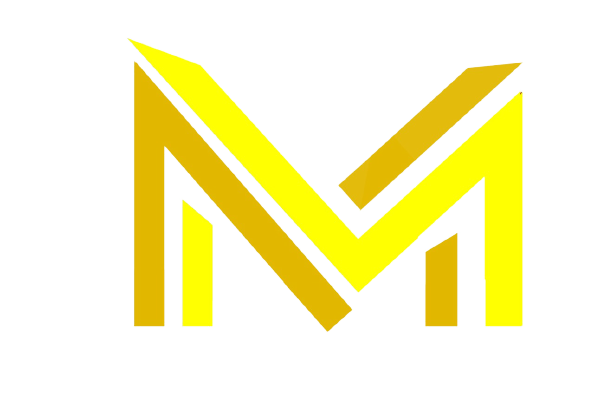
M.M. ELECTRICALS & ELECTRONICS
- info@mmelectricalsindia.com
- Mon-Sat 09:30 A.M to 06:30P.M


A derivative of Polyvinyl Chloride (PVC), Chlorinated Polyvinyl Chloride (CPVC) is a thermoplastic produced by the chlorination of the PVC resin. AKG CPVC plumbing system is manufactured using world’s best Japanese material and Austrian technology & is a safe, long lasting and cost effective solution for hot and cold water. This system is suitable for all plumbing and potable water applications. The pipes and fittings are made of chlorinated polyvinyl chloride and it is available in complete range from 1/2″ to 4″. The pipes are available in SDR 11 and SDR 13.5 whereas fittings are available in SDR 11 pressure class. Threaded inserts in the transition fittings are made from brass to withstand chemical corrosion even at the elevated temperatures.
AKG CPVC Pipes and fittings are manufactured according to IS-15778 :2007 and ASTM D-2846 respectively. The choice of the raw material, the structural accuracy and the strict quality control imparts a high degree of reliability to AKG CPVC Pipes & Fittings making them most suitable, easy and economic solution for transportation and distribution of potable water. It has numerous advantages over G.I. and other conventional Piping system.

Note : Pressure rating of the Pipes in threaded conditions reduces to half compared to unthreaded pipes. These pipes are not recommended for solvent weld joints .
It is imperative to mark the pipe from all sides so that pipe is cut with the help of a Hand Saw. It should be a right angle cut from all the sides. The cut piece should not be with burr on edges.
After cutting, the pipe needs to be chamfered from the outer sides. It is advisable to provide approximately 2mm wide, 150 chamfer on spigot end.
Remove all the burrs and ridges accumulated on the inner as well as the outer edges of the pipe with the help of a deburring knife, file or abrasive paper.
Before applying solvent cement, insert the pipe end into the socket of the next pipe or fitting to check that interference occurs at about 1/3 to 2/3 of the socket depth.
Thoroughly clean the pipe with dry cloth where the solvent cement is going to be applied to avoid dust, dirt, oil, moisture and other foreign material during the installation process.
Mark the pipe length to be inserted for jointing. Apply a liberal coat of solvent cement with the help of the brush on the marked surface.
Push the pipe inside the fitting/pipe so that it goes inside equally from all the sides. Wipe off excess solvent cement that comes out of the edges. Hold the joint for one to two minutes so that the jointing is perfect.
Clean the Male & Female threads.Apply teflon tape in the direction of thread tightening. Hand-tighten the threads firmly. Tighten the joint more by using pipe wrench. Do not over tighten. Use rubber packing to avoid scratches on pipe
Pipeline should be installed in proper alignment & along with necessary clamps. Pressure testing to be done before concealing work. Pressure testing may be carried out after a curing period of 24 hrs and should not be done before that.

A derivative of Polyvinyl Chloride (PVC), Chlorinated Polyvinyl Chloride (CPVC) is a thermoplastic produced by the chlorination of the PVC resin. AKG CPVC plumbing system is manufactured using world’s best Japanese material and Austrian technology & is a safe, long lasting and cost effective solution for hot and cold water. This system is suitable for all plumbing and potable water applications. The pipes and fittings are made of chlorinated polyvinyl chloride and it is available in complete range from 1/2″ to 4″. The pipes are available in SDR 11 and SDR 13.5 whereas fittings are available in SDR 11 pressure class. Threaded inserts in the transition fittings are made from brass to withstand chemical corrosion even at the elevated temperatures.
AKG CPVC Pipes and fittings are manufactured according to IS-15778 :2007 and ASTM D-2846 respectively. The choice of the raw material, the structural accuracy and the strict quality control imparts a high degree of reliability to AKG CPVC Pipes & Fittings making them most suitable, easy and economic solution for transportation and distribution of potable water. It has numerous advantages over G.I. and other conventional Piping system.

Note : Pressure rating of the Pipes in threaded conditions reduces to half compared to unthreaded pipes. These pipes are not recommended for solvent weld joints .
It is imperative to mark the pipe from all sides so that pipe is cut with the help of a Hand Saw. It should be a right angle cut from all the sides. The cut piece should not be with burr on edges.
After cutting, the pipe needs to be chamfered from the outer sides. It is advisable to provide approximately 2mm wide, 150 chamfer on spigot end.
Remove all the burrs and ridges accumulated on the inner as well as the outer edges of the pipe with the help of a deburring knife, file or abrasive paper.
Before applying solvent cement, insert the pipe end into the socket of the next pipe or fitting to check that interference occurs at about 1/3 to 2/3 of the socket depth.
Thoroughly clean the pipe with dry cloth where the solvent cement is going to be applied to avoid dust, dirt, oil, moisture and other foreign material during the installation process.
Mark the pipe length to be inserted for jointing. Apply a liberal coat of solvent cement with the help of the brush on the marked surface.
Push the pipe inside the fitting/pipe so that it goes inside equally from all the sides. Wipe off excess solvent cement that comes out of the edges. Hold the joint for one to two minutes so that the jointing is perfect.
Clean the Male & Female threads.Apply teflon tape in the direction of thread tightening. Hand-tighten the threads firmly. Tighten the joint more by using pipe wrench. Do not over tighten. Use rubber packing to avoid scratches on pipe
Pipeline should be installed in proper alignment & along with necessary clamps. Pressure testing to be done before concealing work. Pressure testing may be carried out after a curing period of 24 hrs and should not be done before that.


M M Electricals India has been serving their clients since 1998. A Delhi (India) based company established by Manish Ranjan. We are authorised dealer of Cadel Technology Pvt. Ltd. – Banglore, Secure Meters Ltd. – Udaypur, AE Automatic Electric – Mumbai..
Register Office Address – D-197. U.G. Floor, Milan Appertment C.R. Road,Laxmi Nagar, Vikas Marg, New Delhi-110092
Head Office Address – Office No.-10,Plot No.-48, Ground Floor, Hasanpur, New Delhi-110092
Ware House – Plot No. 04, Hasanpur, IP Extension, New Delhi-110092
Copyright © 2021-M.M. ELECTRICALS & ELECTRONICS- All rights reserved